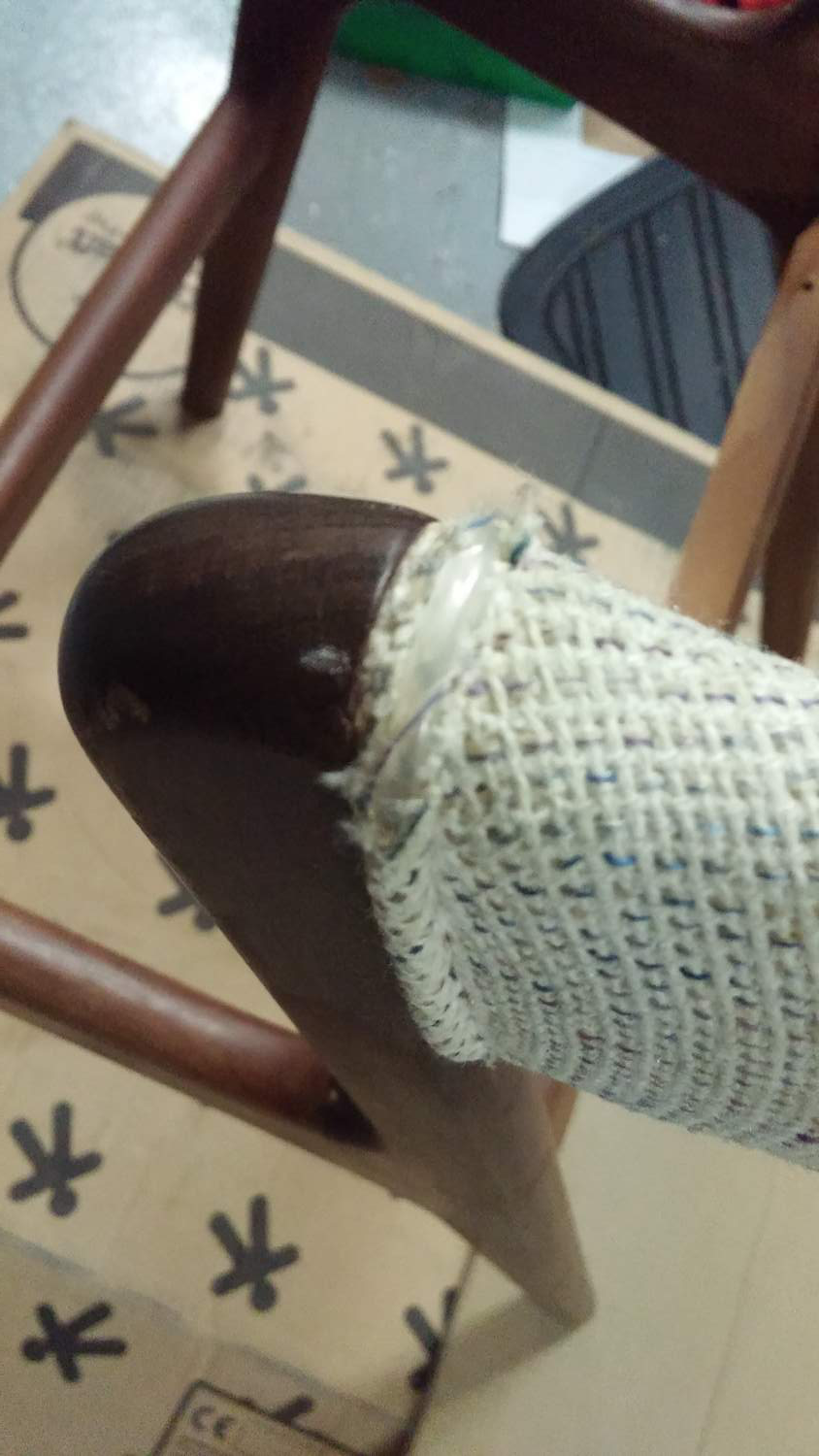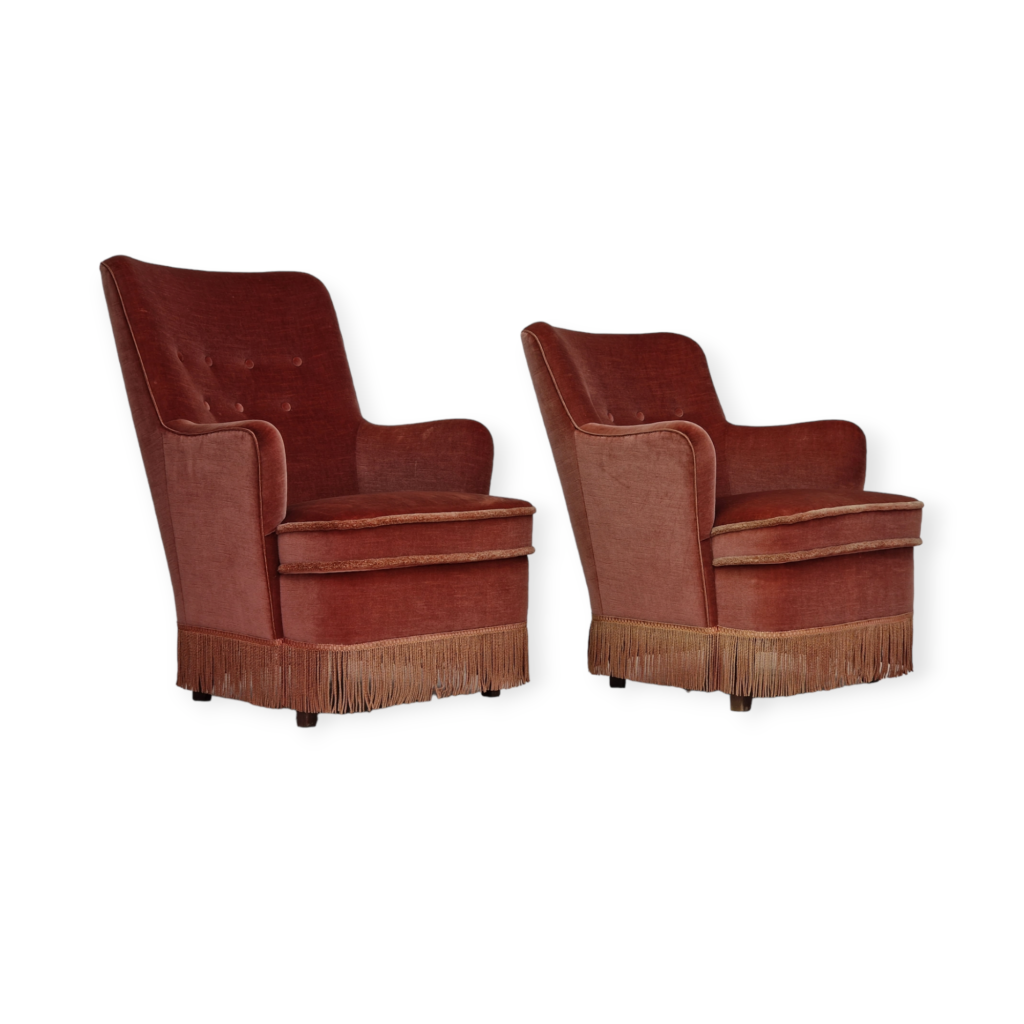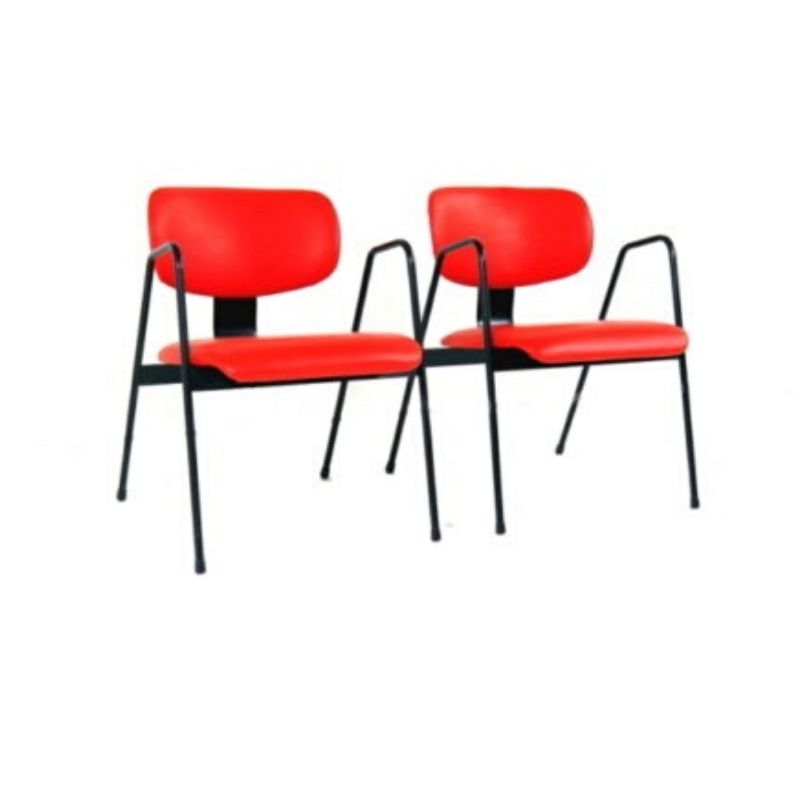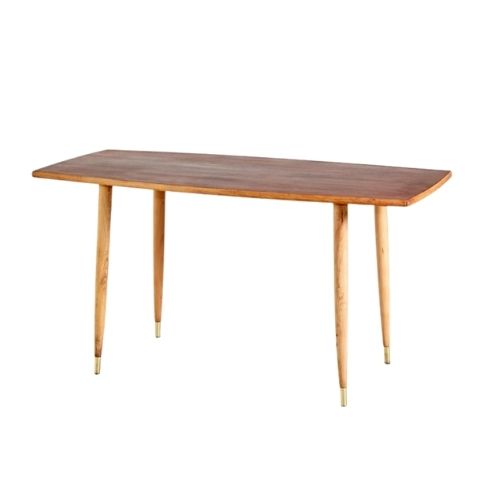I purchased these chairs yesterday (Kai Kristiansen?) for my home and I could use some advice on how best to give them some TLC. The wood frames are nice and tight with only a few minor dings. The finish is pretty bad though - they're all dry throughout and are in different places dirty and discolored (see pictures).
Any general suggestions for how I might revitalize these without having to completely refinish them (I'd like to avoid that if possible)? The person I bought them off of suggested just hitting them with some steel wool and some kind of oil (which looked like it had dye in it), but I'd like to take a more cautious informed approach before touching such nice chairs 🙂
Thanks <img class="wpforo-defaul
<img class="wpforo-defaul
Start with #0000 steel wool and teak oil. I like Star-Brite brand because it doesn't have any added varnish--or color, for that matter. Rub with the grain. Latex paint scuffs will usually come right off if you let the oil work on them for a few minutes. Do not rub too hard in a small area---feather out if there's a tough spot.
Oh, and if there are any glossy dark drip-like blobs, those will probably come right off with a damp rag. I think they are sugar-based food or drink. Oil won't dissolve them for some reason.
There's another type of caked on food crud that shows up only after you oil and that will often come off with water, too. It'll be off white.
Anyway, let the oil sit for five minutes, maybe 10, then wipe it off with rags or paper towels. Let dry for 20 mins, then buff with a soft cloth.
Ace hardware stores sell Star Brite oil. If you want a glossier sheen you can use a brand that has added varnish but it is a little trickier to use.
The wood is Afromosia. You can oil finish it.
I have refinished a set of these same chairs in Afrormosia, and they were finished with a thick oil based varnish (which is what a lot of later Danish furniture was finished with teak regardless of species). I am not sure that teak oil over the top wood have looked ideal, but it might have worked. I stripped them and lightly sanded them.
The backrest is glued on; it would not be so trivial to remove. I masked it off with masking tape. In my case I used methylene chloride based stripper, and stripped the chairs down, then lightly re-surfaced the wood with a cabinet scraper and fine sand paper, then oiled them with dark walnut danish oil followed by a couple coats of watco teak oil and formby's tung oil finish.
I don't believe that the thick varnish is a good look on the chairs or on any danish modern furniture. It is ugly (in my opinion) and has none of the virtues of an oil finish (this is more objectively true, although it does have some of its own virtues).
Disappointing about the backrest. Even if I can get the wood cleaned up I'm a bit skeptical about the fabric. I'd consider redoiing it, but breaking apart the glued backrest sounds like a scary task. Any idea on how this might be approached? I'd even be nervous letting a reupholstery place attempt it...
Do you mean how is the back upholstered? It's not complicated at all, it's just two curved pieces of fabric seamed along the top edge (or tacked to the frame directly, kinda depends on a couple of things) and stapled or tacked along the bottom to the frame. The ends are finished in one of two ways: 1) the raw edge of the fabric is tacked or stapled to the wood and trimmed very closely to the tacks or staples, then the tacks/staples are covered with double welt. Looks like yours has single welt, in which case the raw edges of the fabric are folded under and the welt seam allowances are tucked under with them. This is probably glued down though gimp tacks are sometimes used.
A decent upholsterer can handle this, even someone who does mostly conventional upholstery. The techniques are the same as on lots of conventional dining chairs. It's mostly the fabric that's different! And you don't want thick padding, either. That's about the only thing you need to worry about and it's easy enough to explain to an upholsterer.
(Same with the seats--don't let anyone overpad them. Poufy seats on Danish dining chairs look ridiculous.)
On the other hand, if you like the fabric and it's in good shape, then seriously consider masking off the back fabric if you end up having to strip varnish. And use the thickest possible paste type stripper you can find. That stuff will pretty much stay where you put it! (Also, get a respirator and chemical resistant glove and a long sleeved shirt! 3M makes a very comfortable and effective respirator for under $25. It's one my my most valued pieces of equipment.)
you might try a product called Folex on the stains, but you are limited in what you can do with it because it is attached to the chair. Perhaps consider new fabric?
The backrest is upholstered as two pieces of fabric, as Spanky says (very wise, Spanky is). The front is stapled at the bottom into a little groove at the bottom of the plywood arched backrest, and then wrapped around over the top and stapled to the rear side. A bit of thin padding is applied to the rear, then the fabric is again stapled into the groove at the bottom and hand stitched to the top. I am sure it is also possible to machine stitch the two pieces together at the top, then wrap both sides down and staple into the bottom groove. But I like a hand stitched seam, and mine had been done that way in the prior redo, so I did the same.
I don't really see any reason to remove the backrest.
I will note that these chairs that I redid were upholstered in the original vinyl, which made masking the backrest easy. Had they been done with fabric, the stripper and time would have gotten the masking tape adhesive into the fabric, and made a bad mess. The vinyl got adhesive on it, but it was trivial to clean since it is not absorbent. With your fabric, I am not sure that masking with masking tape is a great idea. Perhaps the masking tape could be applied to the wood, the chair stripped, then the remaining wood could be very carefully stripped, perhaps with a thin piece of plastic or metal held in the gap to protect the fabric. It seems like a lot of trouble for fabric that is not in good condition.
Here are a few pics of the seat back.
The first pic shows the underside of the seat back, where the fabric folds up and in between what feels like 2 separate pieces of wood. My other Danish dining chairs are similarly secured.
The second pic shows where the seat back joins the side of the frame. The fabric appears to wrap over this white plastic piece, which you can see exposed where the fabric is fraying.

The underside of the backrest feels like two pieces of wood because you are feeling the opposing sides of the groove into which the fabric is stapled.
An alternative way to refinish the chairs would be to sand them. This would avoid the challenges of using stripper next to fabric. You would want to avoid over-sanding places so the edges no longer have the proper curves. And because the wood is Afrormosia, which darkens with UV exposure (these are still quite light; they must not have seen much strong sunlight), sanding will expose light wood and give the whole a patchy look. Generallly a colored oil or lacquer is used to even out the tone of the wood. A colored Danish oil would work perfectly.
Of course if you were to decide to re-upholster....
If you need any help, please contact us at – info@designaddict.com









